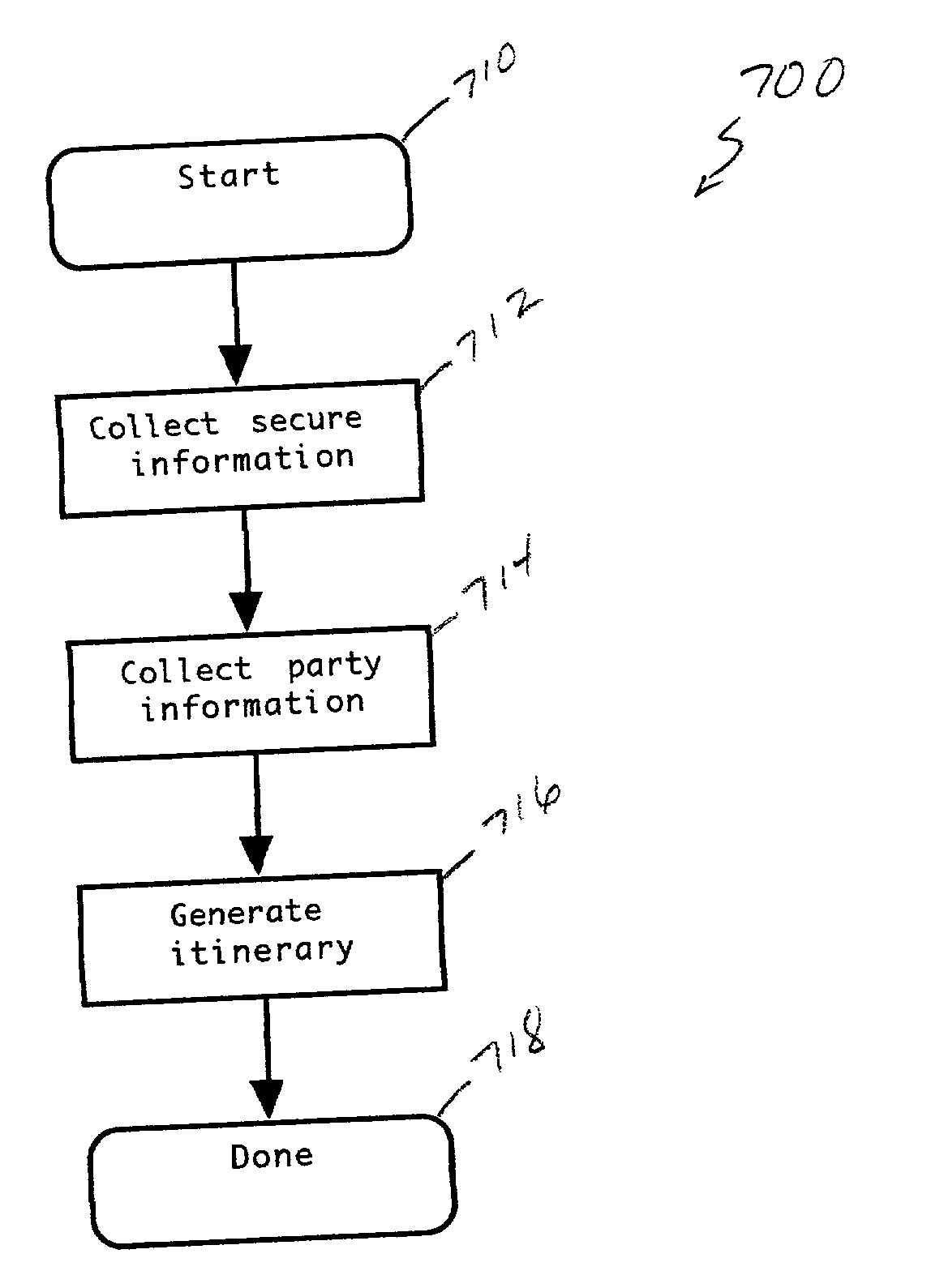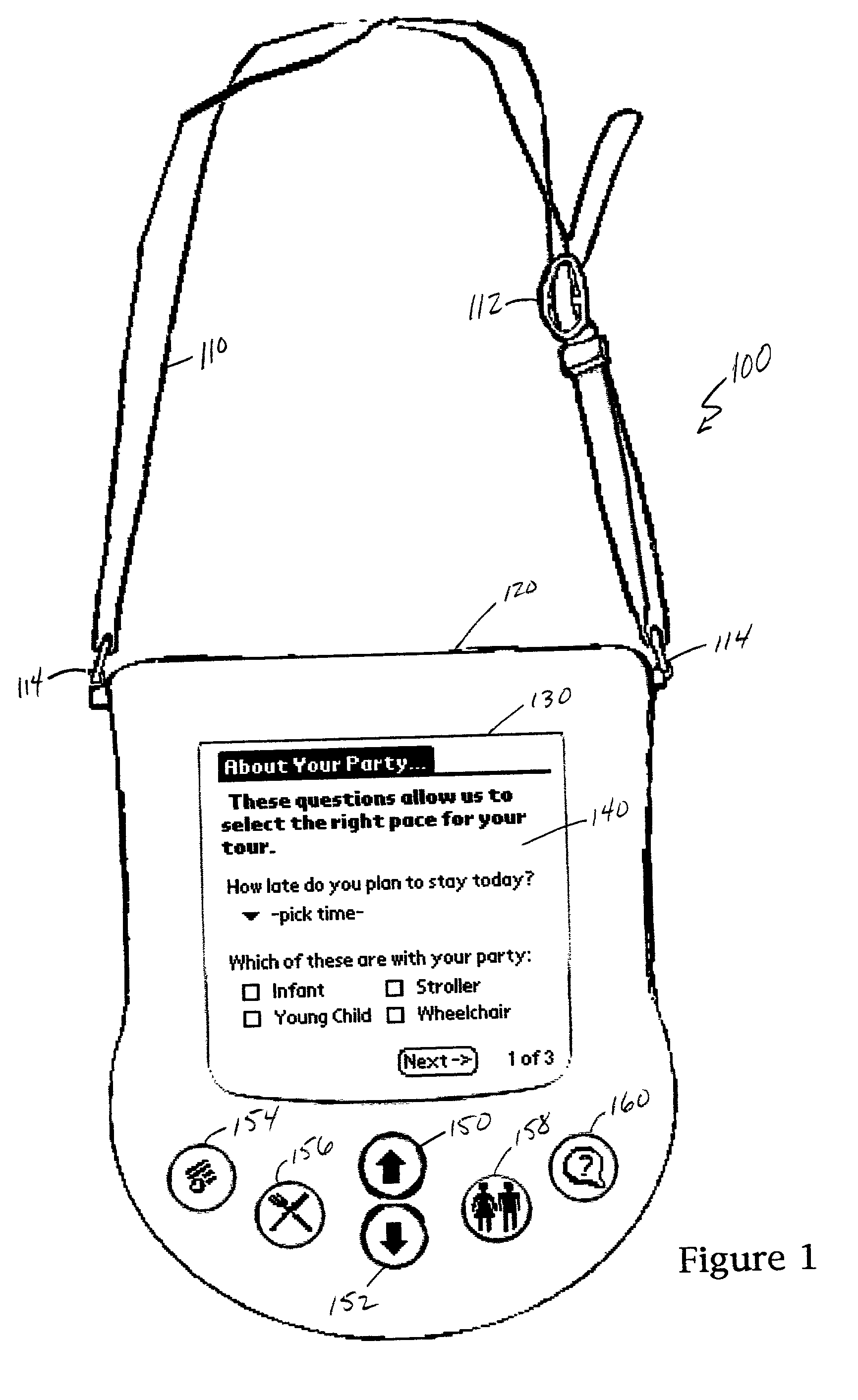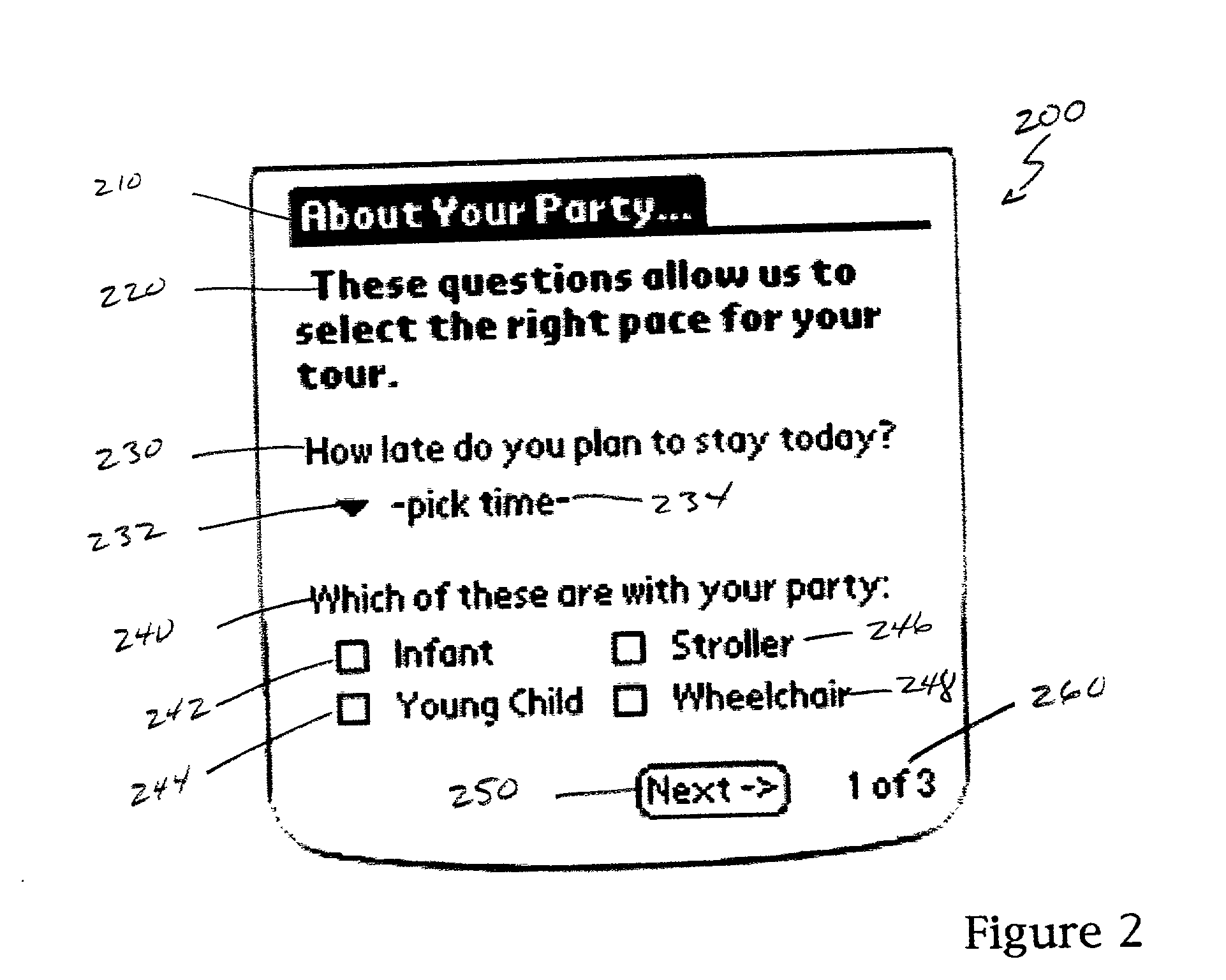Method and apparatus for providing visitors with a personalized itinerary and managed access to attractions
a technology for managing access and personalized tours, applied in the field of providing visitors with, can solve the problems of frequent amounts of information overload, significant cost associated with assembling and maintaining a trained, multi-lingual pool of qualified tour guides, and little ability to customize the tour for each visitor, so as to prevent this capacity overrun.
- Summary
- Abstract
- Description
- Claims
- Application Information
AI Technical Summary
Benefits of technology
Problems solved by technology
Method used
Image
Examples
Embodiment Construction
[0004] Not Applicable
[0005] A tourist wants to see and do the most interesting things available, with a minimum of inconvenience. The tourist wants fond memories of his visit, and maybe more importantly, he wants great stories to tell when he returns home.
[0006] A significant portion of a facility's future business comes from the word-of-mouth marketing that it earns by providing tourists with an experience that makes those great stories. Tourists returning with fabulous tales of their own exploits inspire the next season's tourists to venture forth and have those experiences for themselves.
[0007] A facility may contain many attractions. Individual rides, restaurants, exhibits, stores, shows, etc. are all part of the value a tourist can experience at a facility. Besides the individual attractions a facility might contain, a facility commonly provides collateral materials such as maps and show schedules.
[0008] Too often, this collateral material hits the tourist with a barrage of com...
PUM
 Login to View More
Login to View More Abstract
Description
Claims
Application Information
 Login to View More
Login to View More - R&D
- Intellectual Property
- Life Sciences
- Materials
- Tech Scout
- Unparalleled Data Quality
- Higher Quality Content
- 60% Fewer Hallucinations
Browse by: Latest US Patents, China's latest patents, Technical Efficacy Thesaurus, Application Domain, Technology Topic, Popular Technical Reports.
© 2025 PatSnap. All rights reserved.Legal|Privacy policy|Modern Slavery Act Transparency Statement|Sitemap|About US| Contact US: help@patsnap.com



